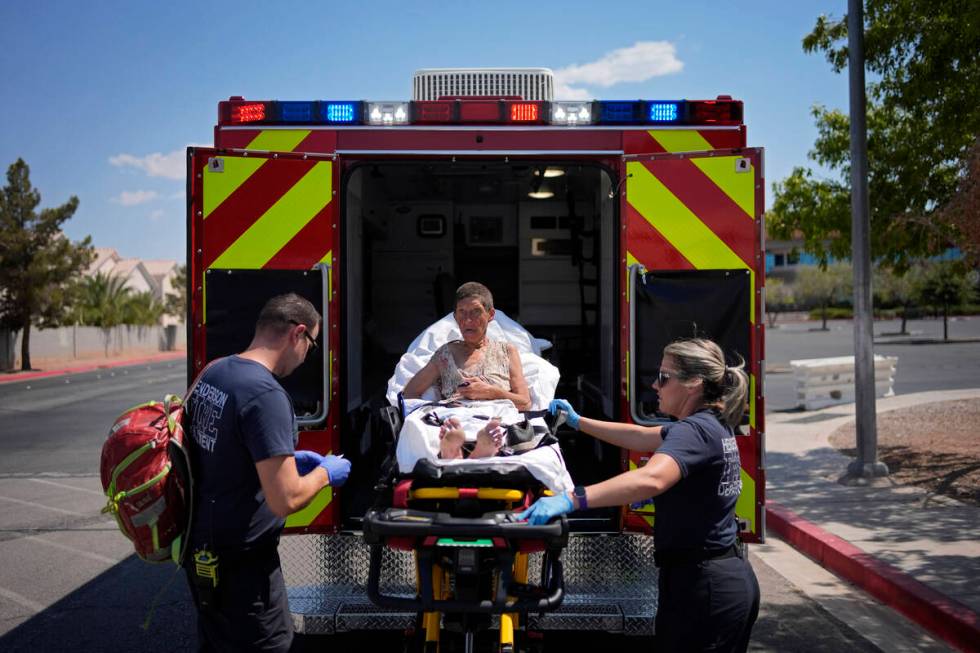‘A problem that doesn’t go away’: Record Las Vegas summer kills 63

Las Vegas’ summer heat has claimed the lives of 63 people in Clark County this year, according to the county coroner’s office. That number will only grow.
Not only have experts said that heat deaths go underreported across the country in general, a coroner’s office spokesperson said the vast majority of cases can take up to 90 days to investigate. In 2021, the office also changed how it investigates heat as a factor in summer deaths, the spokesperson said.
Last year, the total number of deaths where heat was declared a factor shot up to 309 from 169 — about an 80 percent increase when compared with the previous year, the spokesperson said.
Ariel Choinard, coordinator of the Desert Research Institute’s Southern Nevada Heat Resilience Lab, said the numbers show how important it is to take heat warnings seriously. The lab is a new initiative that brings government and nonprofit partners together after most significant heat events, filling a gap in Southern Nevada’s response to deadly heat.
“This is a problem that doesn’t go away,” Choinard said. “And it’s not a problem that necessarily gets better.”
Data released Tuesday only includes details about 45 of the 63 people who have died because not all families have been notified of their deaths. It’s far from final, but the sample does signal some trends. This year’s summer has broken all-time heat records, which was made five times more likely by climate change, data has shown.
What does the data show?
Of those identified, the youngest person to suffer a heat-related death was 29. The primary cause of the seven deaths of people under 46 was connected to methamphetamine, cocaine or fentanyl.
The use of recreational drugs can exacerbate the effects of heat, Choinard said.
Overall, the median age of those who have died is 74, according to the data, reflecting that older people are likely more susceptible to heat illness. Some also had chronic conditions like diabetes or breast cancer.
In Southern Nevada, sundown often doesn’t offer a reprieve from the heat as temperatures have hovered around 90 degrees at the coolest point of the day.
From the lab’s standpoint, Choinard said she hopes Clark County will deliver warnings about heat more effectively, with a focus on communities most affected by the urban heat island effect.
The lab is working on extending heat response locally past the opening of cooling centers, which are sometimes underused because of a lack of messaging, she said.
“Warnings can become background noise,” Choinard said. “We’re facing a challenge to develop messaging that keeps people engaged.”
Contact Alan Halaly at ahalaly@reviewjournal.com. Follow @AlanHalaly on X. Staff writer Caitlin Lilly contributed to this report.